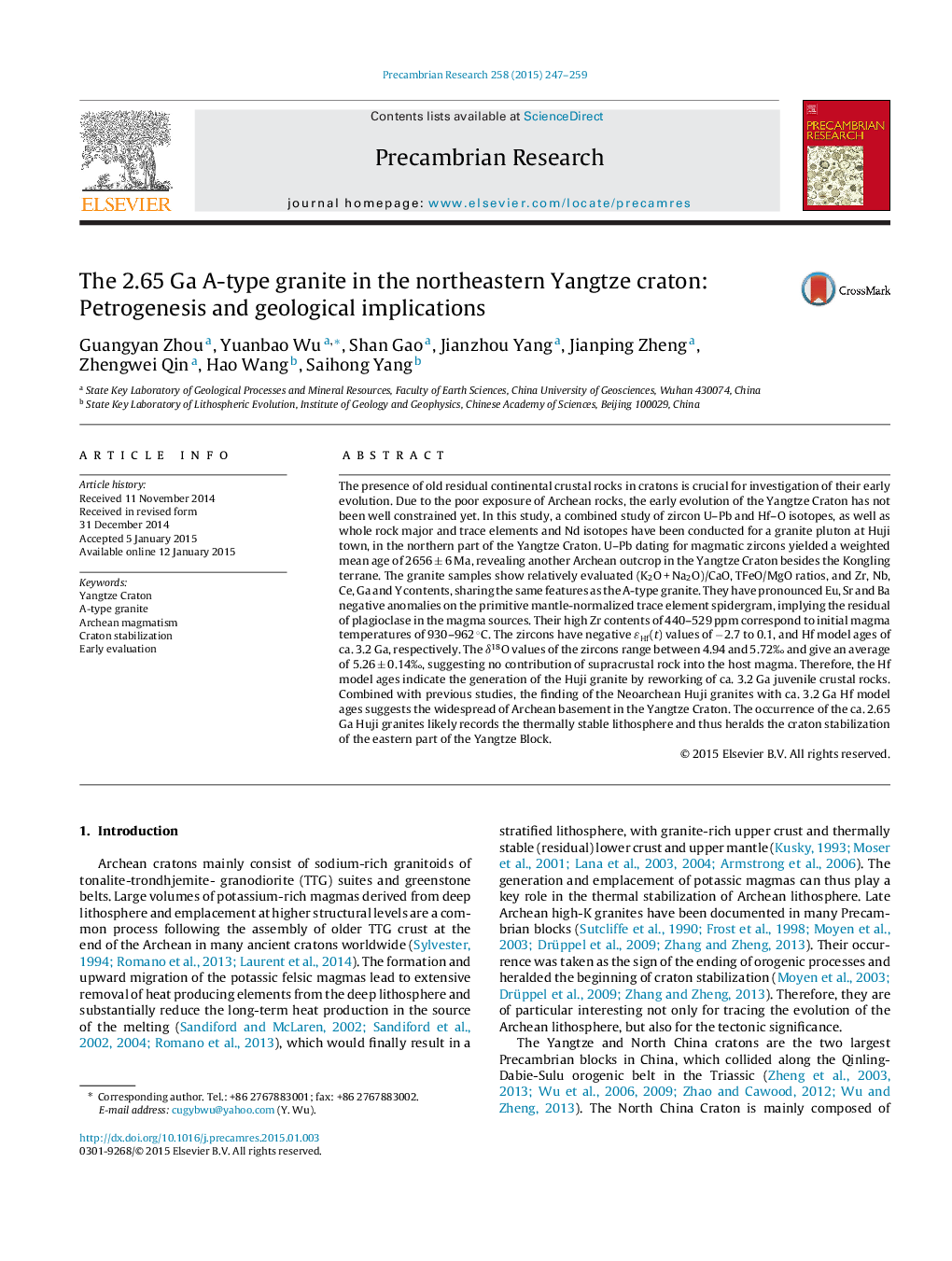| کد مقاله | کد نشریه | سال انتشار | مقاله انگلیسی | نسخه تمام متن |
|---|---|---|---|---|
| 4722742 | 1639617 | 2015 | 13 صفحه PDF | دانلود رایگان |

• There are ca. 2.5 Ga A-type granites in the northern Yangtze Craton.
• The granites were generated by partial melting of ca. 3.2 Ga mafic rocks.
• The stabilization of the eastern part of the Yangtze Block occurred at ca. 2.65 Ga.
The presence of old residual continental crustal rocks in cratons is crucial for investigation of their early evolution. Due to the poor exposure of Archean rocks, the early evolution of the Yangtze Craton has not been well constrained yet. In this study, a combined study of zircon U–Pb and Hf–O isotopes, as well as whole rock major and trace elements and Nd isotopes have been conducted for a granite pluton at Huji town, in the northern part of the Yangtze Craton. U–Pb dating for magmatic zircons yielded a weighted mean age of 2656 ± 6 Ma, revealing another Archean outcrop in the Yangtze Craton besides the Kongling terrane. The granite samples show relatively evaluated (K2O + Na2O)/CaO, TFeO/MgO ratios, and Zr, Nb, Ce, Ga and Y contents, sharing the same features as the A-type granite. They have pronounced Eu, Sr and Ba negative anomalies on the primitive mantle-normalized trace element spidergram, implying the residual of plagioclase in the magma sources. Their high Zr contents of 440–529 ppm correspond to initial magma temperatures of 930–962 °C. The zircons have negative ɛHf(t) values of −2.7 to 0.1, and Hf model ages of ca. 3.2 Ga, respectively. The δ18O values of the zircons range between 4.94 and 5.72‰ and give an average of 5.26 ± 0.14‰, suggesting no contribution of supracrustal rock into the host magma. Therefore, the Hf model ages indicate the generation of the Huji granite by reworking of ca. 3.2 Ga juvenile crustal rocks. Combined with previous studies, the finding of the Neoarchean Huji granites with ca. 3.2 Ga Hf model ages suggests the widespread of Archean basement in the Yangtze Craton. The occurrence of the ca. 2.65 Ga Huji granites likely records the thermally stable lithosphere and thus heralds the craton stabilization of the eastern part of the Yangtze Block.
Journal: Precambrian Research - Volume 258, March 2015, Pages 247–259